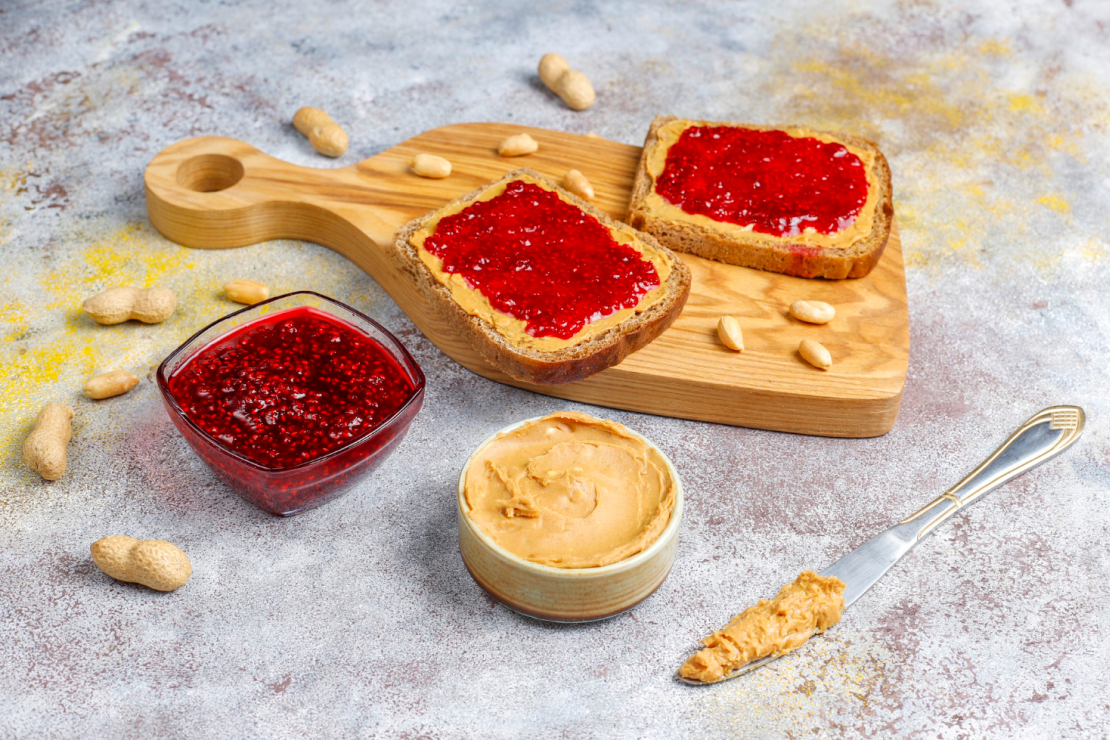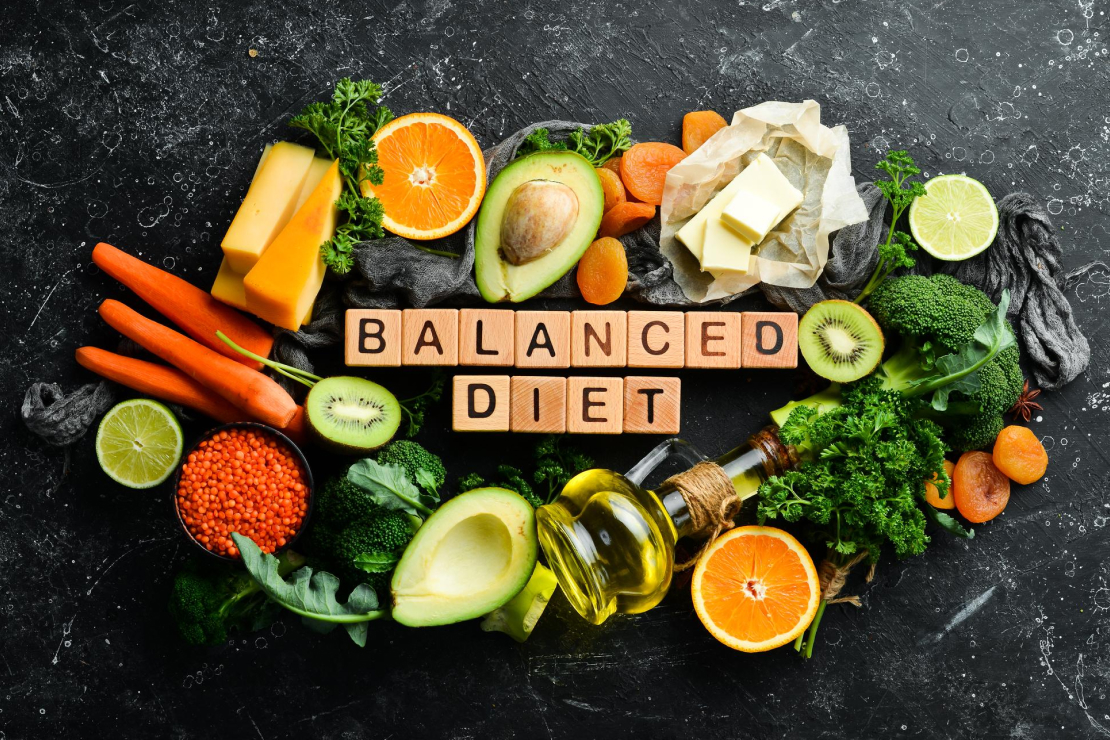Deconstructing a Classic: Calories in a Peanut Butter and Jelly Sandwich
How many calories are in a peanut butter and jelly sandwich? Discover how bread type, portion size, and ingredients impact calories—and how to enjoy this classic while staying healthy.

Table of Content
A Beloved Snack, Reexamined
The peanut butter and jelly sandwich (PB&J) stands as an enduring icon in households worldwide, transcending generations as a go-to comfort food. While its simplicity and deliciousness are undeniable, understanding its nutritional content becomes crucial in our increasingly health-conscious world. In this comprehensive guide, we'll break down every aspect of this classic sandwich, from its caloric content to ways of making it healthier without sacrificing its beloved taste.
Basic Breakdown: What's in a Traditional PB&J?
Before diving into variations, let's understand what constitutes a classic PB&J and its basic nutritional profile. A traditional peanut butter and jelly sandwich typically includes:
| Component | Typical Amount | Calories |
|---|---|---|
| White Bread | 2 slices | 140-160 |
| Peanut Butter | 2 tablespoons | 190-200 |
| Grape Jelly | 1 tablespoon | 50-60 |
| Total | 1 sandwich | 380-420 |
Calories by Bread Type: How Bread Choices Change the Game
Your choice of bread can significantly impact the overall calorie count of your PB&J. Different types of bread not only vary in calories but also offer distinct nutritional benefits. Understanding these differences can help you make an informed choice that aligns with your dietary goals.
| Bread Type | Calories (2 slices) | Key Benefits |
|---|---|---|
| White Bread | 140-160 | Easy to digest, fortified with vitamins |
| Whole Wheat | 160-180 | High fiber, B vitamins, minerals |
| Whole Grain | 160-200 | Maximum nutrition, heart-healthy |
| Sourdough | 160-180 | Probiotic benefits, lower glycemic index |
| Honey Wheat | 140-160 | Slightly sweet, balanced nutrition |
| Potato Bread | 160-180 | Soft texture, added potassium |
Key Considerations for Bread Selection:
- Fiber Content: Whole grain and whole wheat options provide 2-4g of fiber per slice, supporting better digestion and sustained energy
- Protein Content: Whole grain varieties typically offer 4-5g of protein per slice compared to 2-3g in white bread
- Glycemic Impact: Sourdough and whole grain options have a lower glycemic index, helping to maintain stable blood sugar levels
- Nutrient Density: Darker breads generally contain more vitamins, minerals, and antioxidants
- Texture Consideration: Denser breads may require less peanut butter and jelly to feel satisfying
Peanut Butter: The Creamy Calorie Bomb
Peanut butter is a nutrient-dense spread that brings both benefits and caloric considerations to your sandwich. While it's rich in healthy fats, protein, and essential nutrients, its high calorie content means portion control is crucial. Understanding different types and their nutritional profiles can help you make the best choice for your dietary needs.
Peanut Butter Varieties and Their Profiles (per 2 tablespoons):
- Regular Commercial Peanut Butter: 190-200 calories
- Added oils for stability
- Often contains sugar and salt
- Smooth, consistent texture
- Natural Peanut Butter: 180-190 calories
- No added oils or stabilizers
- May require stirring
- Pure peanut taste
- Reduced Fat Peanut Butter: 160-170 calories
- Lower fat content
- Often higher in sugar
- May contain more additives
- Powdered Peanut Butter: 70-80 calories when prepared
- 90% less fat than traditional
- High protein retention
- Versatile for mixing
Nutritional Benefits of Peanut Butter:
- Protein: 7-8g per 2 tablespoons for muscle maintenance and satiety
- Healthy Fats: Rich in monounsaturated fats for heart health
- Vitamins: Good source of vitamin E, niacin, and vitamin B6
- Minerals: Contains magnesium, phosphorus, and zinc
- Antioxidants: Provides resveratrol and other beneficial compounds
Jelly: Sweet, Simple, but Sneaky
The jelly component of your PB&J might seem straightforward, but it's often the hidden source of extra calories and sugar. Different types of fruit spreads can significantly impact both the nutritional profile and taste of your sandwich. Understanding these variations helps you make a choice that balances flavor with health consciousness.
| Type | Calories per Tbsp | Sugar Content | Key Characteristics |
|---|---|---|---|
| Regular Grape Jelly | 50-60 | 12-13g | Smooth, sweet, traditional |
| Strawberry Jam | 50-60 | 12-13g | Fruit pieces, more texture |
| No-Sugar-Added | 25-30 | 5-6g | Natural fruit sugars only |
| Fresh Mashed Fruit | 15-20 | 3-4g | Pure fruit, most nutritious |
Understanding Different Fruit Spreads:
- Jelly:
- Made from fruit juice
- Smooth, clear consistency
- Highest sugar content
- Jam:
- Contains crushed fruit
- More texture and fiber
- Similar sugar content to jelly
- Preserves:
- Whole fruit pieces
- Most natural fruit flavor
- Higher nutrient retention
- Fruit Spread:
- Often uses alternative sweeteners
- Lower calorie option
- May contain added fiber
Smart Tips for Reducing Sugar While Maintaining Flavor:
- Use fresh berries or banana slices instead of jelly
- Try a thin layer of no-sugar-added fruit spread
- Combine half regular jelly with mashed fresh fruit
- Consider chia jam for added nutrition
- Look for brands sweetened with fruit juice
Half a Sandwich: What's the Calorie Count?
For those watching their calorie intake, half a PB&J can be a smart choice. A typical half sandwich contains:
| Component | Amount | Calories |
|---|---|---|
| Bread | 1 slice | 70-80 |
| Peanut Butter | 1 tablespoon | 95-100 |
| Jelly | ½ tablespoon | 25-30 |
| Total | ½ sandwich | 190-210 |
Healthier PB&J Swaps Without Losing the Classic Feel
You can enjoy a healthier version of this classic sandwich with these smart substitutions:
Smart Swaps for a Healthier PB&J:
- Use whole grain bread for added fiber and nutrients
- Try powdered peanut butter to reduce calories
- Replace jelly with mashed fresh fruit
- Use thin spreads instead of thick layers
- Add chia seeds for extra nutrition
Peanut Butter and Jelly Sandwich Nutrition Facts
A traditional PB&J sandwich provides the following nutritional value:
| Nutrient | Amount | % Daily Value |
|---|---|---|
| Calories | 380-420 | 19-21% |
| Protein | 12-15g | 24-30% |
| Carbohydrates | 50-55g | 17-18% |
| Fat | 16-18g | 21-23% |
| Fiber | 3-4g | 11-14% |
| Sugar | 12-14g | 24-28% |
Is PB&J Good for Weight Loss or Not?
A PB&J can be part of a healthy weight loss plan when consumed mindfully. Here's what to consider:
Pros:
- Good source of protein and healthy fats
- Provides sustained energy
- Contains fiber (especially with whole grain bread)
- Satisfying and filling
Considerations:
- High in calories if portions aren't controlled
- Can be high in sugar from jelly
- May not fit strict low-carb diets
- Not suitable for those with peanut allergies
Frequently Asked Questions
How many calories in a PB&J on whole wheat bread?
A PB&J on whole wheat bread typically contains 400-440 calories, slightly higher than white bread due to the increased nutritional content.
Is peanut butter and jelly sandwich good for weight loss?
PB&J can be part of a weight loss diet when portion-controlled and made with healthy ingredients. The protein and fiber content can help keep you feeling full.
What is the healthiest bread for a peanut butter and jelly sandwich?
Whole grain bread is typically the healthiest choice, offering more fiber, protein, and nutrients compared to white or processed breads.
Can PB&J be part of a balanced diet?
Yes, PB&J can be part of a balanced diet when made with wholesome ingredients and eaten in moderation. It provides protein, healthy fats, and complex carbohydrates.
Conclusion: Enjoying PB&J with Awareness
The peanut butter and jelly sandwich remains a beloved classic for good reason. While its calorie content varies based on ingredients and portions, it can be part of a healthy diet when made mindfully. By understanding its nutritional profile and making smart ingredient choices, you can continue to enjoy this comfort food while maintaining your health goals.
Start Your Health Journey Today
Download Macro Tracking AI and take control of your nutrition with the power of artificial intelligence.
Download on App Store

